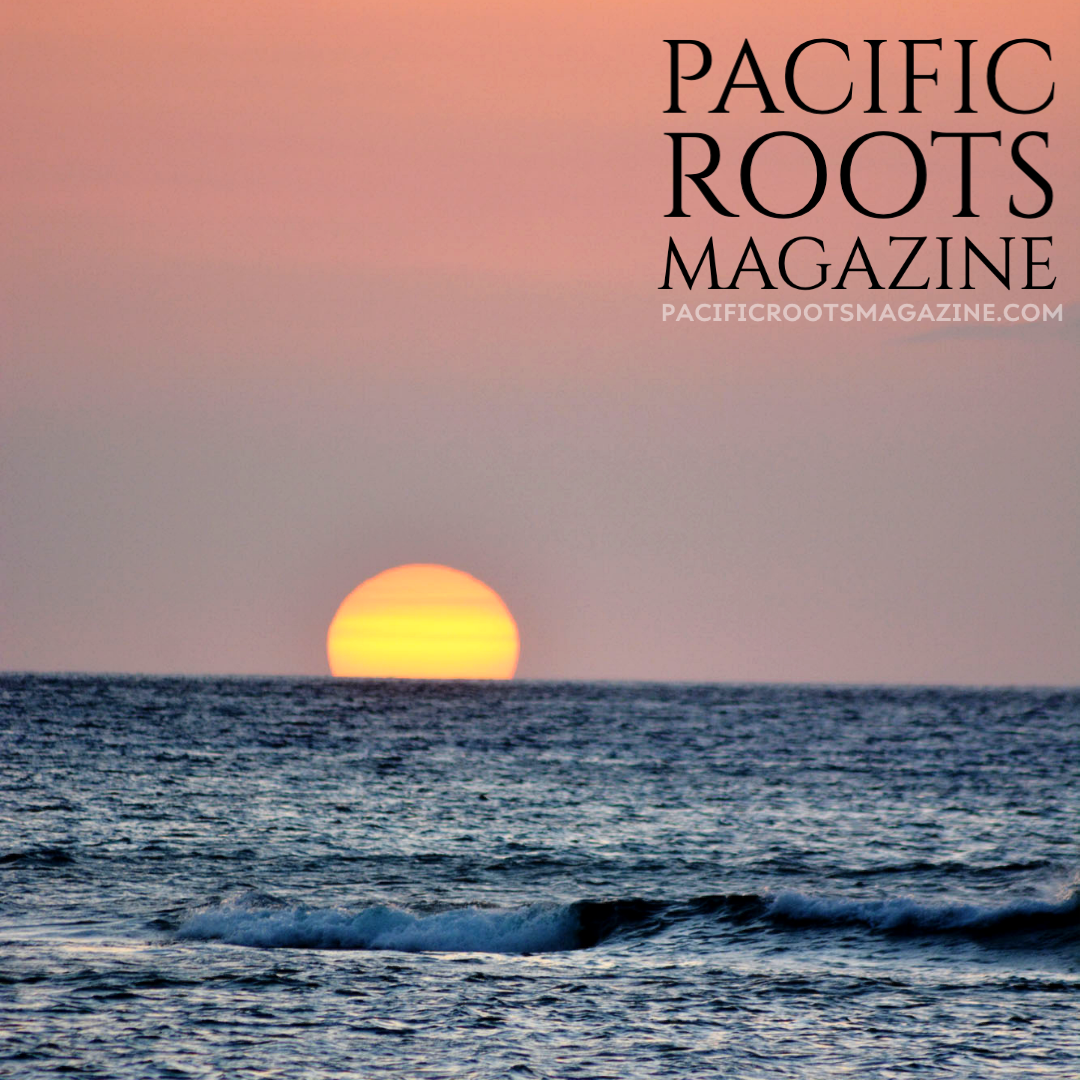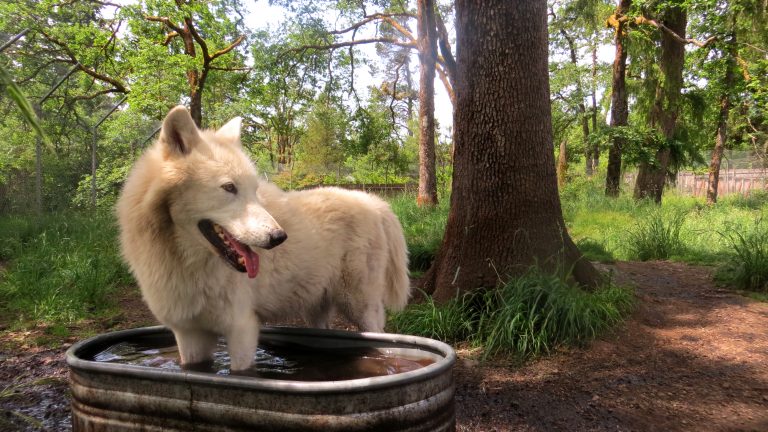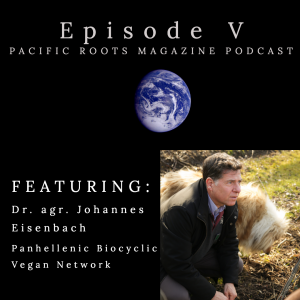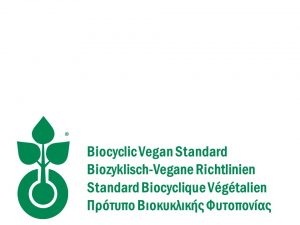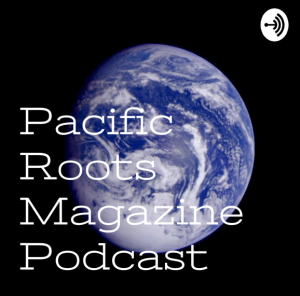“To conserve and protect wolves and their habitat.”
In 1982, the sanctuary that was to eventually become Wolf Haven International was founded in Tenino, Washington. A beacon for wolf advocacy, Wolf Haven International also provides a lifetime home for displaced and captive born wolves and promotes wolf restoration in historical ranges. Located on 82 acres of wooldands, wetland and rare mounded prairie, the sanctuary is also critical for prairie restoration education and efforts (over 97% of highly threatened prairie habitat has already been lost in western Washington). Wolf Haven International’s work encompasses sanctuary, education, activism and conservation all towards a mission “to conserve and protect wolves and their habitat”. Pacific Roots Magazine had an opportunity to learn more about the organization’s work from Kim Young, Wolf Haven International’s Director of Communications.
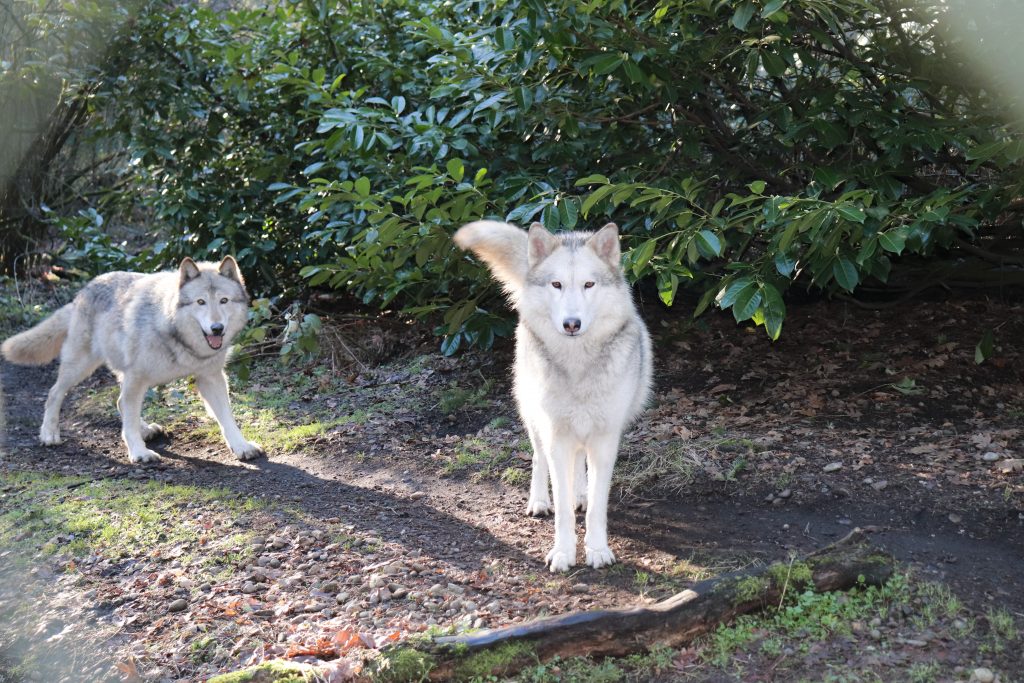
How have issues changed for wolf advocacy and activism since Wolf Haven International was established in 1982?
Wolf Haven’s advocacy and activism changed dramatically with the recovery of wolves in Washington. As conflict between wolves and livestock producers intensified, so did the conflict between stakeholder groups and our state was quickly devolving into war over wolves. In response, the Washington Department of Fish and Wildlife (WDFW) worked with legislators on both sides of the aisle to allocate funding to contract with a human wildlife conflict transformation specialist, Francine Madden. She performed a conflict assessment and members of all stakeholder groups agreed with WDFW that we wanted her expertise in navigating this challenging issue. Francine provided advisement and training at all levels. Human – wildlife conflict will only intensify in the future, but we have learned to transform how we choose to address that conflict. Instead of continuing to be a destructive and divisive force, conflict over wolves has become an opportunity to better understand one another and work toward durable long-term solutions. It is not easy, but the results have been deeply gratifying.
Wolf Haven received accreditation from GFAS in 2015. What was the process like and is Wolf Haven indeed the only accredited wolf sanctuary on the planet?
The GFAS accreditation process gave Wolf Haven an opportunity to engage more deeply with board members, staff and volunteers as we analyzed our practices to ensure they continued to be aligned with our values. As a result, we made significant changes to better reflect our desire to provide the highest quality of life for the animals in our care. Receiving notice of full accreditation was cause for great joy, while acknowledging that we have more work to do. Our goal is to end the need for captive wolf facilities – these animals belong in the wild.
While Wolf Haven is the only wolf specific sanctuary with GFAS accreditation, there are other GFAS accredited sanctuaries that serve a variety of displaced animals like foxes, coyotes and wolves.
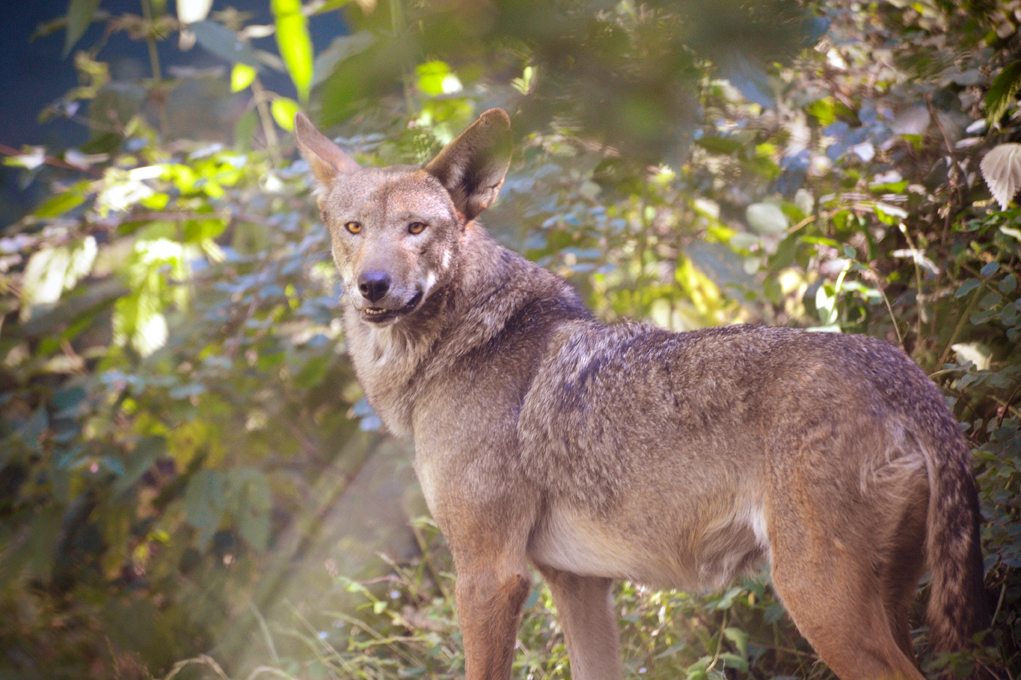
Are founders Steve and Linda Kuntz still involved with sanctuary operations? Also, can any comments be made about the Wolf Haven team and life working there? It seems like a very interesting and exciting place to work!
Although Steve and Linda Kuntz no longer hold a staff or board position with Wolf Haven International, they remain good friend to the sanctuary and ardent supporters. They live nearby and occasionally visit but are more likely to be seen at our annual fall fundraiser, Wolves and Wine. It is always an honor to introduce the founders and visionaries of Wolf Haven International to our guests.
Working at Wolf Haven is a unique, complex and rewarding opportunity. Regardless of job title or department, every employee is focused on doing what is in the best interest of the wolves living here and those in the wild. Because we are a small nonprofit organization, each staff member wears many hats and is proficient at a variety of tasks. Opportunities for professional and personal growth are plentiful, and it’s possible to learn not just about wolves, but also about predators and prey, flora and fauna, collaboration and conflict management, fundraising and marketing and all aspects of nonprofit management.
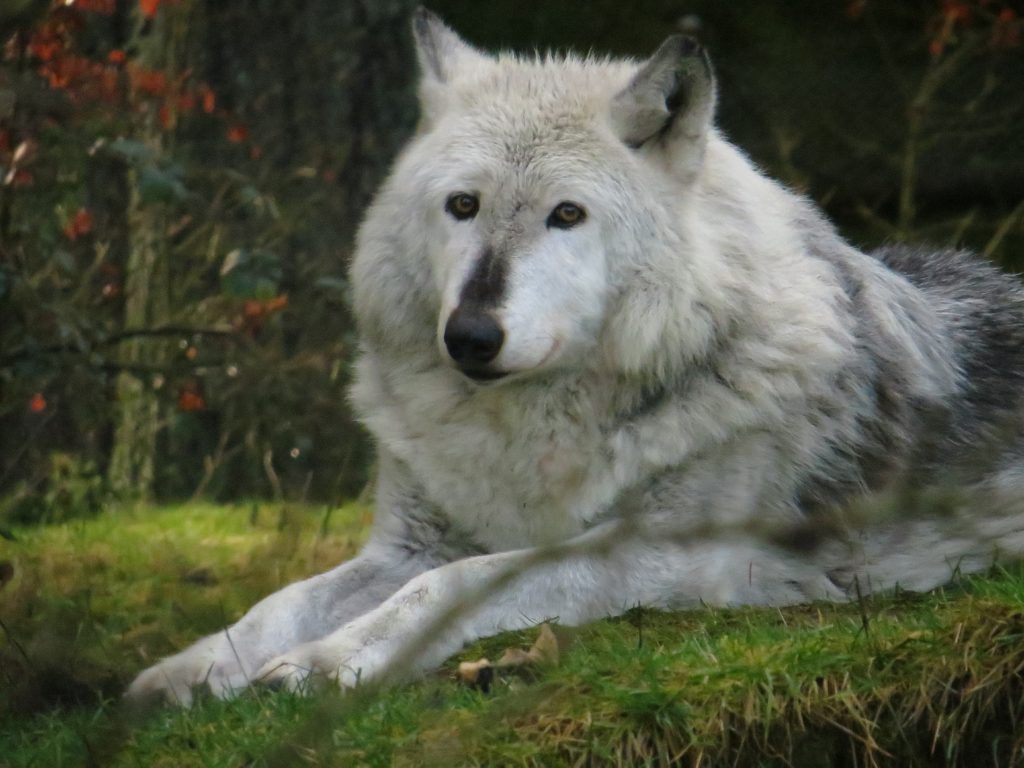
In terms of interacting with the public, education is a key service at Wolf Haven and are largely conservation related. What do you think members of the public are most often surprised to learn from the educational activities at Wolf Haven?
Our guests are interested in learning where our resident wolves come from and why they are living in captivity. They are usually shocked to hear about breeders, the exploitation of “exotics”, and the private ownership of wolves and wolfdogs (legal or not). Over our 37-year history, Wolf Haven has rescued animals from many of the 50 states.
Each resident at Wolf Haven has his or her own unique story and our guides are excellent at telling their histories.
Another learning point that comes as a surprise is that wolves are not typically aggressive toward humans, and in fact, quite the opposite – they much prefer to avoid humans all together! This runs contrary to European folktales and the typical portrayal of wolves in movies, where we are more accustomed to see a wolf (or pack) actually stalk a person. While we explain that wolves are not domesticated animals and should be left alone to be wolves, we also mention that the wild, a wolf is much more likely to be aware of human presence than the reverse – and remain out of view. Unlike dogs, wolves do not look to humans for approval or recognition – they look to other wolves.
We emphasize the reasons wolfdogs do not make good pets and how unfair it is to force this situation upon the animal. Another one of our key messages is about the strong familial bond that wolves possess; in fact, a wolf pack is a wolf family, often a multigenerational one.
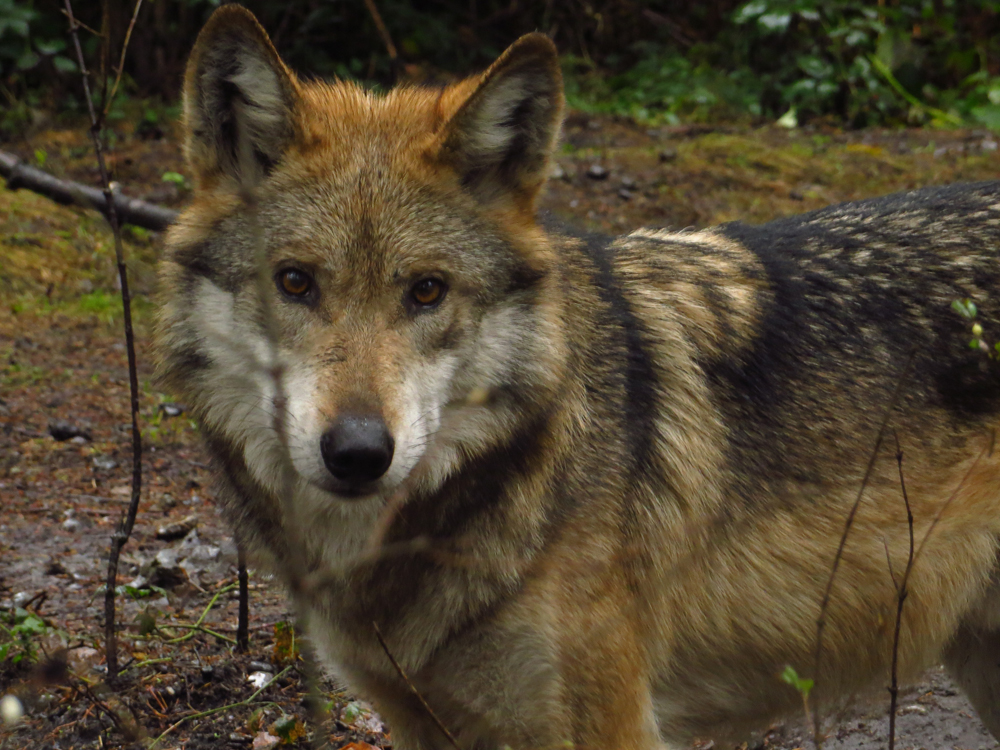
Wolves are fascinating, incredibly intelligent animals and there are so many things to talk about, from the role they play in the ecosystem to captive-breeding programs that exist to ensure the continued health of critically endangered species like the red wolf and Mexican wolf.
Guests who visit our Washington sanctuary often don’t realize the large number of animals that live here, because they don’t see them. Of the nearly 60 resident animals living here, only the 12 on the public route can be seen by guests and all staff; this means that the other 45+ wolves live in relative seclusion from humans (other than animal care staff). It is always a thrilling moment, however, to hear the entire sanctuary population erupt into a group howl. Talk about surround-sound!
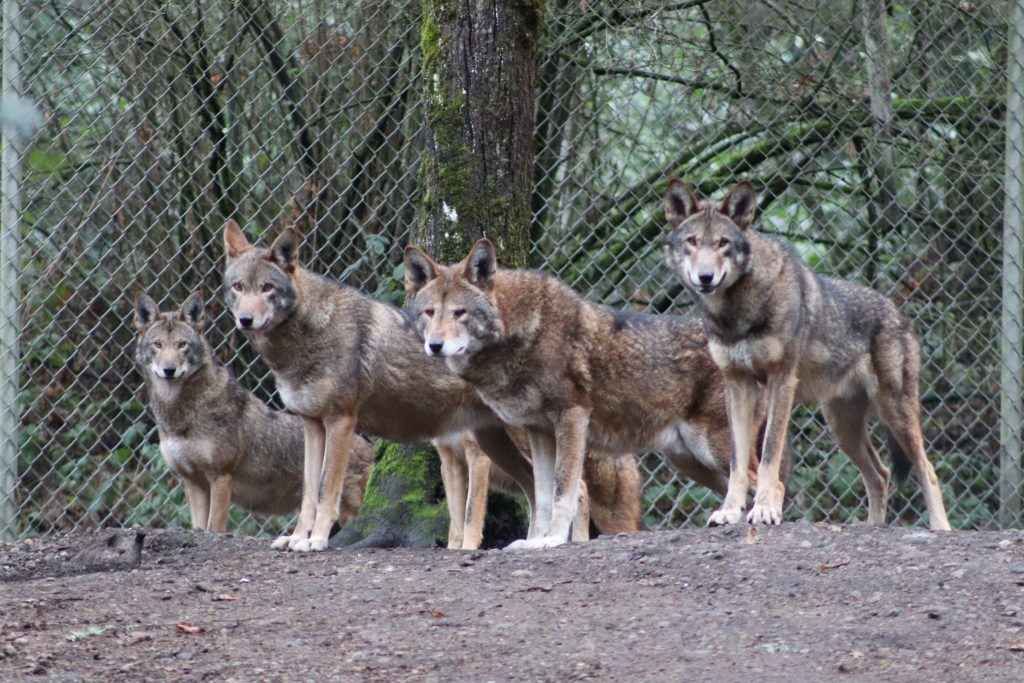
Select stories of wolves at Wolf Haven Interational
Lexi was born at Wolf Country, a roadside attraction in Alaska. Wolf Country had about 30 animals, some wolves but mostly wolfdogs. Sadly, every animal at Wolf Country lived his or her entire life on an 8 foot drag chain attached to a metal post. Tourists could come in and see the animals for a small fee. During the tour, the owner would let the people come very close to a flimsy fence and since the animals were chained, there was nothing they could do to hide or move away. They were forced to be with people and in some cases the owner would make them do tricks for treats. Since wolves do not normally seek out human companionship, it was cruel to force them to be on display this way. Their entire world was limited by the chain and post. In late 2011, the state of Alaska stepped in and shut the facility down (it is illegal to own wolfdogs in Alaska). Thankfully, all the animals were rescued by Lockwood Animal Rescue Center (LARC) located in California. Lexi lived at LARC for a couple of years before being brought up to Wolf Haven to be a companion for London.
- Lexi has an even temperament and is pretty interested in the visits. She is very food motivated however and is always on the lookout for more to eat. She and London have gotten along very well since their introduction, in fact, they are one of the most bonded pairs in the sanctuary. Lexi often interacts with London by licking his muzzle and pulling at his tail. You may notice that London’s tail is missing some fur because of this.
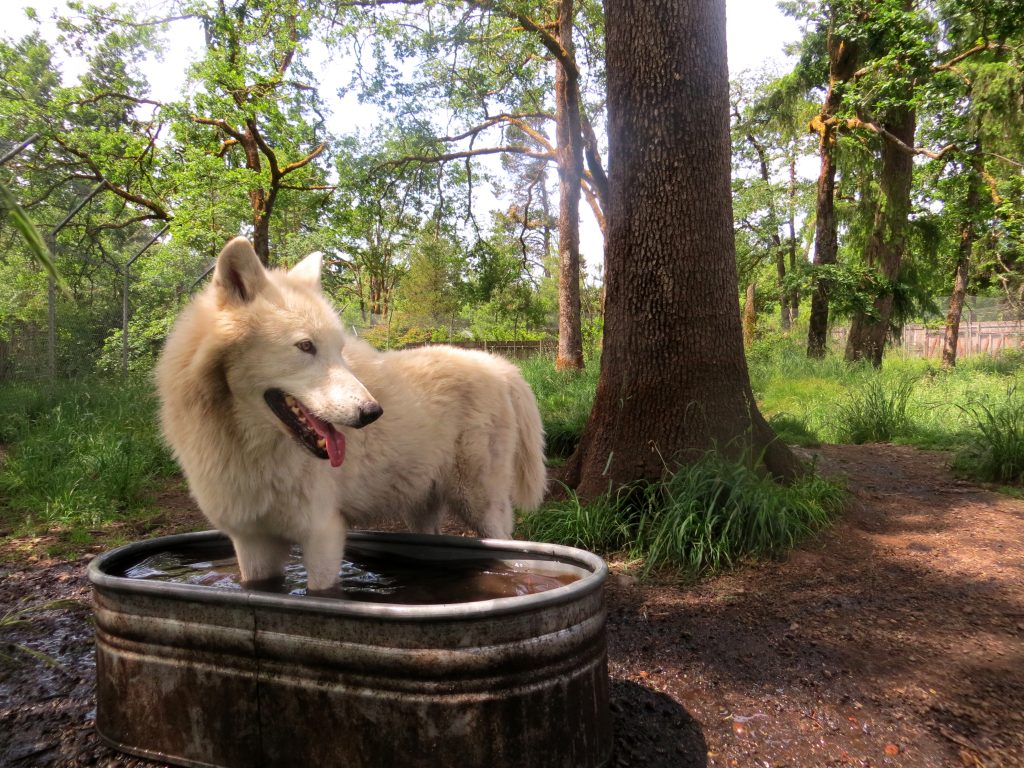
London was initially purchased by a trainer in Hollywood. The trainer was going to make him act in a movie. Do you think that wolves are good movie material? London displayed normal wolf traits such as independence, self-reliance, and no desire to please his trainer. When the trainer realized London was not going to obey him like a dog might, he discarded him, and London ended up at a dog rescue. Wolf Haven drove to Hollywood to pick him up in 2009.
London is our ‘smelly’ wolf. He is probably the biggest scent roller of the sanctuary. You will almost never see the scruff around his neck clean because it’s usually always coated in this week’s food or enrichment. He even likes catnip!
- London is a confident wolf. He often comes right up to the fence to greet groups. On occasion, he will bluff charge the fence as the visitor group is leaving his enclosure. This is quite a contrast from when he first arrived at Wolf Haven. During his early time here, he hid near the back of the enclosure, hunkered down with his tail tucked. Living at the sanctuary has been very positive for London.
Juno’s story is a very common one. A woman in Colorado thought it would be nice to own a wolf, so she purchased Juno who turned out to be a high content wolfdog. The woman owned a Lexus SUV and used it any time she needed to take Juno anywhere. Juno came to realize that this was ‘her’ vehicle and claimed it as such. After about a year, most of the interior had been ripped up and pulled apart; Juno had ripped part of the bumper off and had even gone as far as to start chewing on the tires. The Lexus is a good example of the potential destructive power of a bored wolfdog. While owning a puppy was cute and fun for a while, Juno quickly grew up into a wolfdog that the owner could no longer control. The owner contacted Wolf Haven about placement and we were able to take Juno.
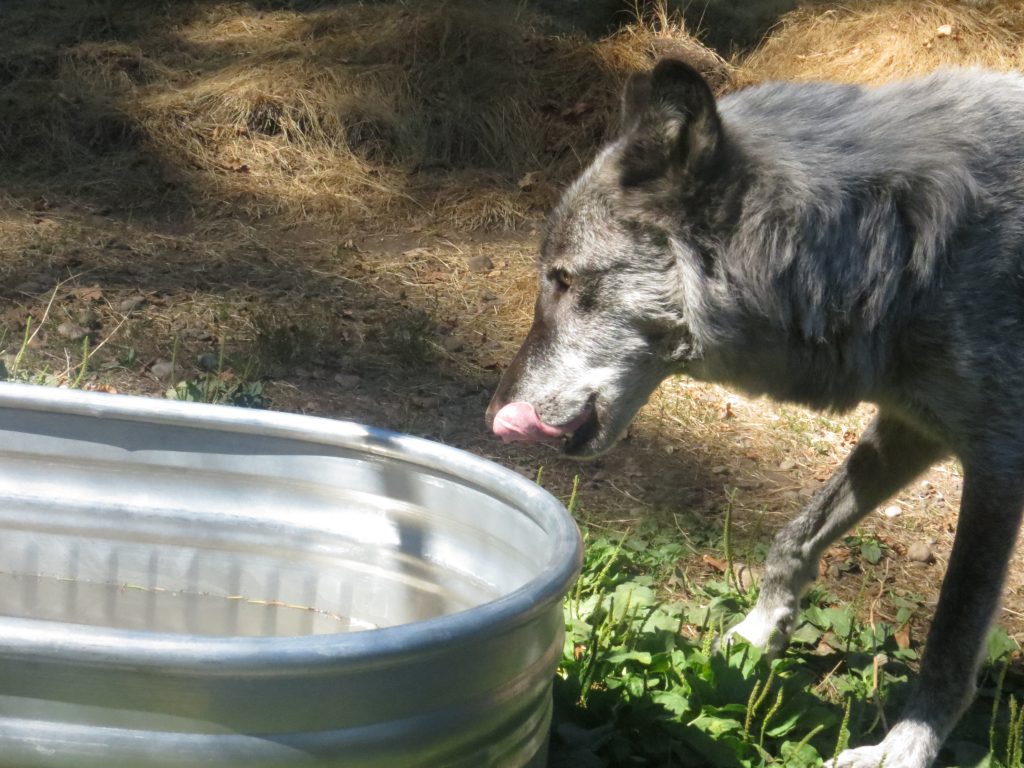
When Juno arrived, Shadow followed her everywhere. For about the first 72 hours Shadow was never more than about five feet from Juno. Juno was still unfamiliar with her surroundings, and often got defensive if Shadow got too close. Juno would snap at Shadow; Shadow would jump away, and immediately resume following Juno around. Poor Juno had to get used to her new home, all the while being constantly harassed by Shadow’s overtures. Shadow wasn’t deterred for a second those first days. This was the first time that he had a suitable canine companion. And Shadow got his wish – he and Juno are now great friends (and Shadow is less needy for attention…sometimes he can be seen a whole 10 feet away from Juno!).
- Juno is quite a bit shyer than her rambunctious enclosure mate Shadow. But despite this Juno still is very curious about visitors and doesn’t appear to mind them at all. Juno is very food-motivated like Shadow, and truly ‘wolfs’ down her food. She can easily eat twice as fast as Shadow.

Can you share a bit about the sanctuary’s prairie habitat and collaborative projects that have involved rare and endangered species?
In the 1990s, Wolf Haven leadership wisely made the decision to purchase nine parcels of rare Mima Mound prairie to serve as a buffer to the wolf sanctuary.
Prairies are one of the rarest ecosystems in our country. Ninety-seven percent of prairie land has been eliminated in Washington State and of the remaining three percent, less than half is currently in a protected status. Wolf Haven partners with The Center for Natural Lands Management, Washington Department of Fish and Wildlife, The Audubon Society, U.S. Fish and Wildlife Service, and Department of Army to restore the 36 acres of Mima Mound prairie found on our 82 acres back to its former condition. The Wolf Haven prairie is home to three protected species – Mazama pocket gophers, golden paintbrush and white oaks. It is also critical habitat for the Taylor’s checkerspot butterfly.
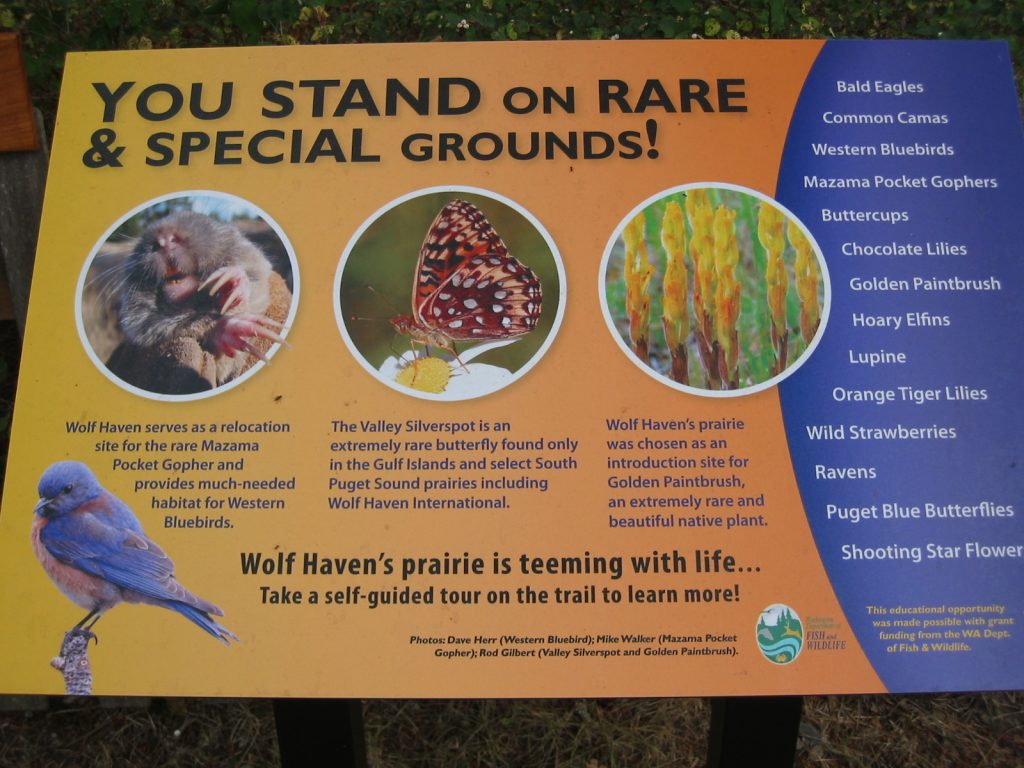

Current numbers for wolves currently at the sanctuary as well as cared for since its inception:
There are currently 57 animals living in the Tenino, WA sanctuary and 37 gray wolves at the Bridger, Montana McCleery Ranch.
Sanctuary numbers in Washington:
- Gray wolves: 13
- Red wolves: 18
- Mexican wolves: 13
- Wolfdogs: 11
- Coyotes: 2
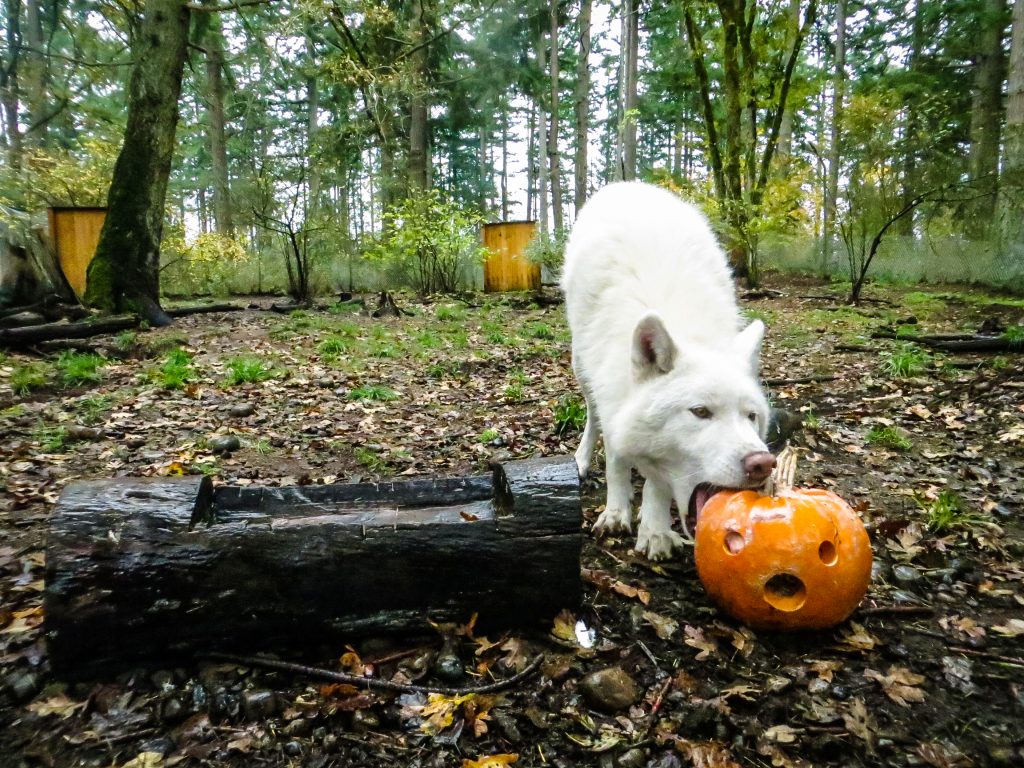
Visit Wolf Haven International online at https://wolfhaven.org/
Feature & Interview by Annika Lundkvist at Pacific Roots Magazine Editorial Desk
